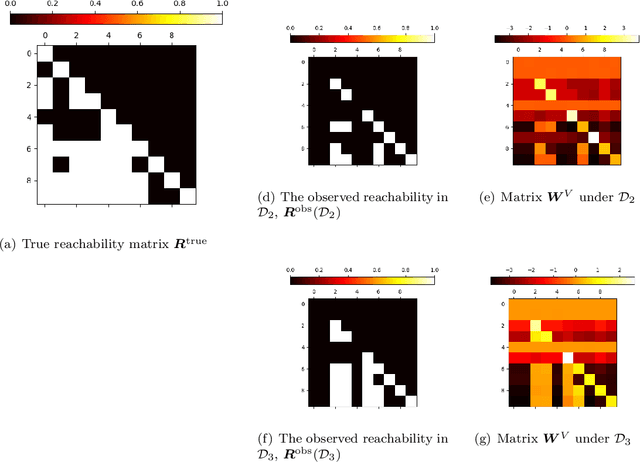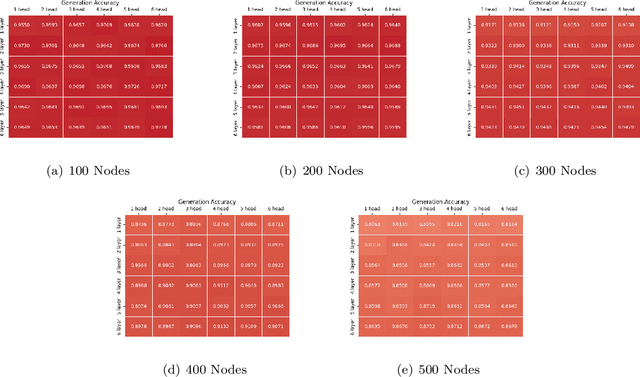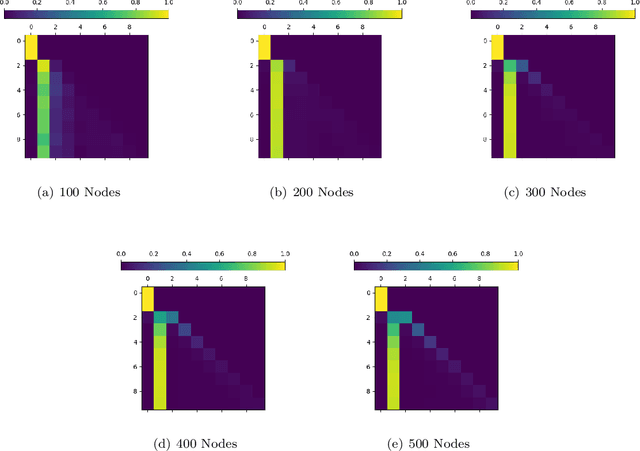Yifei Shen
Habitizing Diffusion Planning for Efficient and Effective Decision Making
Feb 10, 2025Abstract:Diffusion models have shown great promise in decision-making, also known as diffusion planning. However, the slow inference speeds limit their potential for broader real-world applications. Here, we introduce Habi, a general framework that transforms powerful but slow diffusion planning models into fast decision-making models, which mimics the cognitive process in the brain that costly goal-directed behavior gradually transitions to efficient habitual behavior with repetitive practice. Even using a laptop CPU, the habitized model can achieve an average 800+ Hz decision-making frequency (faster than previous diffusion planners by orders of magnitude) on standard offline reinforcement learning benchmarks D4RL, while maintaining comparable or even higher performance compared to its corresponding diffusion planner. Our work proposes a fresh perspective of leveraging powerful diffusion models for real-world decision-making tasks. We also provide robust evaluations and analysis, offering insights from both biological and engineering perspectives for efficient and effective decision-making.
Omni-DNA: A Unified Genomic Foundation Model for Cross-Modal and Multi-Task Learning
Feb 05, 2025



Abstract:Large Language Models (LLMs) demonstrate remarkable generalizability across diverse tasks, yet genomic foundation models (GFMs) still require separate finetuning for each downstream application, creating significant overhead as model sizes grow. Moreover, existing GFMs are constrained by rigid output formats, limiting their applicability to various genomic tasks. In this work, we revisit the transformer-based auto-regressive models and introduce Omni-DNA, a family of cross-modal multi-task models ranging from 20 million to 1 billion parameters. Our approach consists of two stages: (i) pretraining on DNA sequences with next token prediction objective, and (ii) expanding the multi-modal task-specific tokens and finetuning for multiple downstream tasks simultaneously. When evaluated on the Nucleotide Transformer and GB benchmarks, Omni-DNA achieves state-of-the-art performance on 18 out of 26 tasks. Through multi-task finetuning, Omni-DNA addresses 10 acetylation and methylation tasks at once, surpassing models trained on each task individually. Finally, we design two complex genomic tasks, DNA2Function and Needle-in-DNA, which map DNA sequences to textual functional descriptions and images, respectively, indicating Omni-DNA's cross-modal capabilities to broaden the scope of genomic applications. All the models are available through https://huggingface.co/collections/zehui127
A Comprehensive Analysis on LLM-based Node Classification Algorithms
Feb 02, 2025Abstract:Node classification is a fundamental task in graph analysis, with broad applications across various fields. Recent breakthroughs in Large Language Models (LLMs) have enabled LLM-based approaches for this task. Although many studies demonstrate the impressive performance of LLM-based methods, the lack of clear design guidelines may hinder their practical application. In this work, we aim to establish such guidelines through a fair and systematic comparison of these algorithms. As a first step, we developed LLMNodeBed, a comprehensive codebase and testbed for node classification using LLMs. It includes ten datasets, eight LLM-based algorithms, and three learning paradigms, and is designed for easy extension with new methods and datasets. Subsequently, we conducted extensive experiments, training and evaluating over 2,200 models, to determine the key settings (e.g., learning paradigms and homophily) and components (e.g., model size) that affect performance. Our findings uncover eight insights, e.g., (1) LLM-based methods can significantly outperform traditional methods in a semi-supervised setting, while the advantage is marginal in a supervised setting; (2) Graph Foundation Models can beat open-source LLMs but still fall short of strong LLMs like GPT-4o in a zero-shot setting. We hope that the release of LLMNodeBed, along with our insights, will facilitate reproducible research and inspire future studies in this field. Codes and datasets are released at \href{https://llmnodebed.github.io/}{https://llmnodebed.github.io/}.
Toward Relative Positional Encoding in Spiking Transformers
Jan 28, 2025Abstract:Spiking neural networks (SNNs) are bio-inspired networks that model how neurons in the brain communicate through discrete spikes, which have great potential in various tasks due to their energy efficiency and temporal processing capabilities. SNNs with self-attention mechanisms (Spiking Transformers) have recently shown great advancements in various tasks such as sequential modeling and image classifications. However, integrating positional information, which is essential for capturing sequential relationships in data, remains a challenge in Spiking Transformers. In this paper, we introduce an approximate method for relative positional encoding (RPE) in Spiking Transformers, leveraging Gray Code as the foundation for our approach. We provide comprehensive proof of the method's effectiveness in partially capturing relative positional information for sequential tasks. Additionally, we extend our RPE approach by adapting it to a two-dimensional form suitable for image patch processing. We evaluate the proposed RPE methods on several tasks, including time series forecasting, text classification, and patch-based image classification. Our experimental results demonstrate that the incorporation of RPE significantly enhances performance by effectively capturing relative positional information.
Large Multi-modal Models Can Interpret Features in Large Multi-modal Models
Nov 22, 2024Abstract:Recent advances in Large Multimodal Models (LMMs) lead to significant breakthroughs in both academia and industry. One question that arises is how we, as humans, can understand their internal neural representations. This paper takes an initial step towards addressing this question by presenting a versatile framework to identify and interpret the semantics within LMMs. Specifically, 1) we first apply a Sparse Autoencoder(SAE) to disentangle the representations into human understandable features. 2) We then present an automatic interpretation framework to interpreted the open-semantic features learned in SAE by the LMMs themselves. We employ this framework to analyze the LLaVA-NeXT-8B model using the LLaVA-OV-72B model, demonstrating that these features can effectively steer the model's behavior. Our results contribute to a deeper understanding of why LMMs excel in specific tasks, including EQ tests, and illuminate the nature of their mistakes along with potential strategies for their rectification. These findings offer new insights into the internal mechanisms of LMMs and suggest parallels with the cognitive processes of the human brain.
Revisiting the Graph Reasoning Ability of Large Language Models: Case Studies in Translation, Connectivity and Shortest Path
Aug 18, 2024



Abstract:Large Language Models (LLMs) have achieved great success in various reasoning tasks. In this work, we focus on the graph reasoning ability of LLMs. Although theoretical studies proved that LLMs are capable of handling graph reasoning tasks, empirical evaluations reveal numerous failures. To deepen our understanding on this discrepancy, we revisit the ability of LLMs on three fundamental graph tasks: graph description translation, graph connectivity, and the shortest-path problem. Our findings suggest that LLMs can fail to understand graph structures through text descriptions and exhibit varying performance for all these three fundamental tasks. Meanwhile, we perform a real-world investigation on knowledge graphs and make consistent observations with our findings. The codes and datasets are available.
Expressive and Generalizable Low-rank Adaptation for Large Models via Slow Cascaded Learning
Jul 01, 2024Abstract:Efficient fine-tuning plays a fundamental role in modern large models, with low-rank adaptation emerging as a particularly promising approach. However, the existing variants of LoRA are hampered by limited expressiveness, a tendency to overfit, and sensitivity to hyperparameter settings. This paper presents LoRA Slow Cascade Learning (LoRASC), an innovative technique designed to enhance LoRA's expressiveness and generalization capabilities while preserving its training efficiency. Our approach augments expressiveness through a cascaded learning strategy that enables a mixture-of-low-rank adaptation, thereby increasing the model's ability to capture complex patterns. Additionally, we introduce a slow-fast update mechanism and cascading noisy tuning to bolster generalization. The extensive experiments on various language and vision datasets, as well as robustness benchmarks, demonstrate that the proposed method not only significantly outperforms existing baselines, but also mitigates overfitting, enhances model stability, and improves OOD robustness. Code will be release in https://github.com/microsoft/LoRASC very soon.
Can Graph Learning Improve Task Planning?
May 29, 2024Abstract:Task planning is emerging as an important research topic alongside the development of large language models (LLMs). It aims to break down complex user requests into solvable sub-tasks, thereby fulfilling the original requests. In this context, the sub-tasks can be naturally viewed as a graph, where the nodes represent the sub-tasks, and the edges denote the dependencies among them. Consequently, task planning is a decision-making problem that involves selecting a connected path or subgraph within the corresponding graph and invoking it. In this paper, we explore graph learning-based methods for task planning, a direction that is orthogonal to the prevalent focus on prompt design. Our interest in graph learning stems from a theoretical discovery: the biases of attention and auto-regressive loss impede LLMs' ability to effectively navigate decision-making on graphs, which is adeptly addressed by graph neural networks (GNNs). This theoretical insight led us to integrate GNNs with LLMs to enhance overall performance. Extensive experiments demonstrate that GNN-based methods surpass existing solutions even without training, and minimal training can further enhance their performance. Additionally, our approach complements prompt engineering and fine-tuning techniques, with performance further enhanced by improved prompts or a fine-tuned model.
ALPINE: Unveiling the Planning Capability of Autoregressive Learning in Language Models
May 15, 2024



Abstract:In this paper, we present the findings of our Project ALPINE which stands for ``Autoregressive Learning for Planning In NEtworks." Project ALPINE initiates a theoretical investigation into the development of planning capabilities in Transformer-based language models through their autoregressive learning mechanisms, aiming to identify any potential limitations in their planning abilities. We abstract planning as a network path-finding task where the objective is to generate a valid path from a specified source node to a designated target node. In terms of expressiveness, we show that the Transformer is capable of executing path-finding by embedding the adjacency and reachability matrices within its weights. Our theoretical analysis of the gradient-based learning dynamic of the Transformer reveals that the Transformer is capable of learning both the adjacency matrix and a limited form of the reachability matrix. These theoretical insights are then validated through experiments, which demonstrate that the Transformer indeed learns the adjacency matrix and an incomplete reachability matrix, which aligns with the predictions made in our theoretical analysis. Additionally, when applying our methodology to a real-world planning benchmark, called Blocksworld, our observations remain consistent. Our theoretical and empirical analyses further unveil a potential limitation of Transformer in path-finding: it cannot identify reachability relationships through transitivity, and thus would fail when path concatenation is needed to generate a path. In summary, our findings shed new light on how the internal mechanisms of autoregressive learning enable planning in networks. This study may contribute to our understanding of the general planning capabilities in other related domains.
Compression-Realized Deep Structural Network for Video Quality Enhancement
May 10, 2024



Abstract:This paper focuses on the task of quality enhancement for compressed videos. Although deep network-based video restorers achieve impressive progress, most of the existing methods lack a structured design to optimally leverage the priors within compression codecs. Since the quality degradation of the video is primarily induced by the compression algorithm, a new paradigm is urgently needed for a more "conscious" process of quality enhancement. As a result, we propose the Compression-Realize Deep Structural Network (CRDS), introducing three inductive biases aligned with the three primary processes in the classic compression codec, merging the strengths of classical encoder architecture with deep network capabilities. Inspired by the residual extraction and domain transformation process in the codec, a pre-trained Latent Degradation Residual Auto-Encoder is proposed to transform video frames into a latent feature space, and the mutual neighborhood attention mechanism is integrated for precise motion estimation and residual extraction. Furthermore, drawing inspiration from the quantization noise distribution of the codec, CRDS proposes a novel Progressive Denoising framework with intermediate supervision that decomposes the quality enhancement into a series of simpler denoising sub-tasks. Experimental results on datasets like LDV 2.0 and MFQE 2.0 indicate our approach surpasses state-of-the-art models.
 Add to Chrome
Add to Chrome Add to Firefox
Add to Firefox Add to Edge
Add to Edge